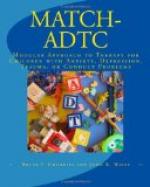who have winked at their inhumanity, deserve no mild
reprobation. But legislation alone is not adequate
to meet the situation; the underlying cause is the
insufficient payment of adult workers, which practically
necessitates supplementation by what the children
can add to the family income. This is one illustration
of the way in which all our social problems are tangled
together so that it is impossible fully to solve any
one without solving the others. When every adult
receives wages enough to support a normal family-and
when he is content to restrict his family to normal
size; when the public schools are made efficient enough
to show their evident worth to parents and to attract
the children themselves, and a strict truant system
takes care that the law is really obeyed; when the
sick and defective and aged among the poor are cared
for at public expense as a matter of course, there
will be no need for children to work to help support
the family; and we must endeavor, by the arousal of
public opinion and by nationwide legislation, to keep
children out of the factories, the shops, and the
mines, till they are full-grown and educated. [Footnote:
S. Nearing, The Solution of the Child-Labor Problem.
J. Spargo, The Bitter Cry of the Children. E.
N. Clopper, Child Labor in City Streets. Reports
of Annual Meetings of the National Child Labor Committee.
(Free literature. 105 East Twenty-second Street, New
York City.)]
(4) A less appalling, but still sufficiently serious;
aspect of industrial unrighteousness is the dirty,
crowded, ugly, unsanitary, and sometimes indecent
conditions under which many workers in our prosperous
age have to carry on their work. Lack of proper
lighting, space, and ventilation, unnecessary noises,
and general untidiness, undermine the health and morals
of laborers; while insufficient fire-protection causes
intermittently one tragedy after another. Much
has been done in many quarters to improve such conditions;
not a few up-to-date factories are models of cleanliness
and sanitation, spacious, reasonably quiet, and altogether
pleasant places in which to spend the working day.
They point the way which all must in time follow.
In addition, the provision of reading-rooms, baths,
rest- and recreation-rooms, lunch-rooms, athletic
fields, and the like, give augury of that happy future
when work shall be divorced from ugliness and free
from unnecessary physical strain.[Footnote: Sir
T. Oliver, Diseases of Occupation. W. H. Tolman,
Social Engineering, chaps. III, X, xi.
World’s Work, vol. 15, p. 9534; vol. 23, p. 294.
Outlook, vol. 97, p. 817; vol. 100, p. 353.]




